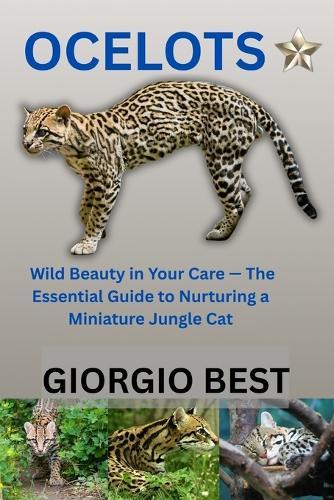Overview
Ocelots exhibit one of the most expansive ranges among Neotropical wildcats. Their distribution spans from southern Texas and the Mexican Gulf Coast through Central America and deep into South America, as far south as northern Argentina and Uruguay. The core of their population density lies within the tropical rainforests of the Amazon Basin and the Pantanal. Historically, ocelots occupied a wider range in North America, with fossil evidence of their presence as far north as Arizona and Arkansas during the Late Pleistocene. Climate shifts and habitat changes likely contracted their northern range, leaving behind isolated remnant populations in southern Texas and northern Mexico. Biogeographically, the distribution of ocelots is tightly linked to the availability of dense vegetation cover and prey abundance. Their range is typically confined to forested regions-humid lowland rainforests, dry deciduous forests, mangroves, thorn scrub, and even secondary growth forests-though they have demonstrated a notable degree of habitat plasticity. In Central America, mountain ranges and river systems create natural barriers that have contributed to genetic differentiation among populations. In South America, the Amazon River and the Andes Mountains act as both corridors and barriers, shaping population connectivity. Some isolated populations, such as those on Trinidad and Margarita Island off the Venezuelan coast, may be remnants of earlier range extensions facilitated by historical land bridges. Ocelot habitat fragmentation due to agriculture, deforestation, and urban expansion has resulted in a patchwork of disconnected populations. This has critical implications for genetic flow and long-term viability, necessitating the identification and preservation of biological corridors. The ocelot has occupied a notable place in the cultural imagination and spiritual traditions of numerous Indigenous and colonial societies throughout the Americas. Its elusive nature, majestic beauty, and predatory prowess have rendered it both revered and feared across civilizations. In pre-Columbian Mesoamerican cultures, such as the Aztecs, Maya, and Olmecs, wild cats-especially spotted ones-held deep spiritual meaning. Though jaguars were more prominent in mythological texts, ocelots also featured in carvings, pottery, and codices. The ocelot's likeness appears in ancient stone sculptures and ceremonial art, symbolizing stealth, mystery, and nocturnal strength. Among the Maya, the ocelot was sometimes associated with Xbalanque, one of the Hero Twins of the Popol Vuh, who had feline traits.
Full Product Details
Author: Collins T Silver ,
Giorgio Best
Publisher: Independently Published
Imprint: Independently Published
Dimensions:
Width: 15.20cm
, Height: 0.90cm
, Length: 22.90cm
Weight: 0.218kg
ISBN: 9798298906937
Pages: 158
Publication Date: 19 August 2025
Audience:
General/trade
,
General
Format: Paperback
Publisher's Status: Active
Availability: Available To Order

We have confirmation that this item is in stock with the supplier. It will be ordered in for you and dispatched immediately.



